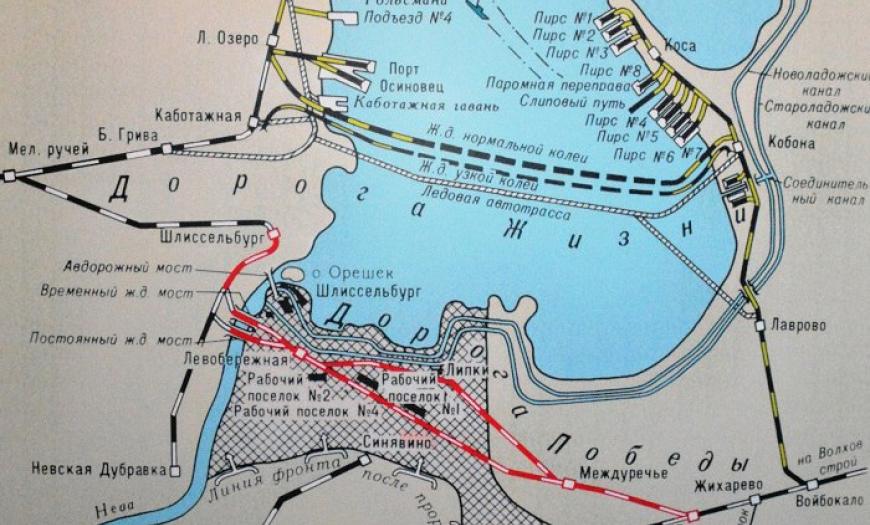The temporary railway line Polyana — Shlisselburg, known as the Victory Road, played a huge role in the fate of besieged Leningrad during the Great Patriotic War.
On January 18, 1943, Soviet troops broke through the blockade of Leningrad between the shores of Lake Ladoga and the front line at the Sinyavinsky Heights. A narrow strip of breakthrough with a width of only 10–11 km made it possible to connect Leningrad with the country by land, complementing the ice-ferry Road of Life. The State Defense Committee adopted a Resolution on the urgent construction of the Shlisselburg — Polyany railway on the Naziya — Zhikharevo railway line.
The construction of the line was entrusted to the Department of Military Reconstruction of the Leningrad Front under the command of engineer I.G. Zubkov. Prospecting and design work was carried out by the design teams of the Leningrad and Volkhov fronts, under the leadership of the staff of Lentransproekt (since 1951 — Lengiprotrans) N.Ya. Kulago and A.S. Bokareva.
Only 20 days were allotted for the construction of the road. On January 19, 1943, the very next day after the blockade was broken, surveyors and designers began to select and beat off the route on the ground. The route was laid through swampy terrain, there were practically no roads for the delivery of soil. The most difficult stage was the construction of a low-water bridge across the Neva. The city archives were brought up to search for a shallow water site. As a result, a site with a maximum depth of 6 m was found. Design and construction were carried out around the clock. The projects drawn up in pencil were coordinated with the builders and immediately issued for the production of work.
In just 17 days, the railway line with a pile-ice low-water bridge was put into operation. On February 7, 1943, the first train arrived on the new line at the Finland Station in Leningrad. After the opening of the movement, the construction of a high-water backup bridge began, which began to operate on March 19, 1943.
The road named The Corridor of Death among the drivers, was under constant fire. Because of this, the movement was carried out only at night, and the highway constantly needed restoration work. The main line began to operate in comparative safety and around the clock from September 1943.
At first, only 2–3 pairs of trains passed per day because of the alternation of directions. To increase the capacity, the caravan principle was applied: one night the trains went to Leningrad, the other — back. The throughput capacity increased to 16–25 trains. On March 19, 1943, it was decided to lay a bypass route 2–3 km from the main line Shlisselburg — Polyany. Movement on it began on April 25, and by the end of May, up to 35 trains a day passed.
Thanks to the new highway, the city was regularly supplied with food and weapons, part of the population was evacuated. After the start of work, the Victory Road accounted for 75% of the cargo delivered to Leningrad. For all the time, 5,440 trains were carried along the route and more than 4.5 million tons of cargo were delivered.




